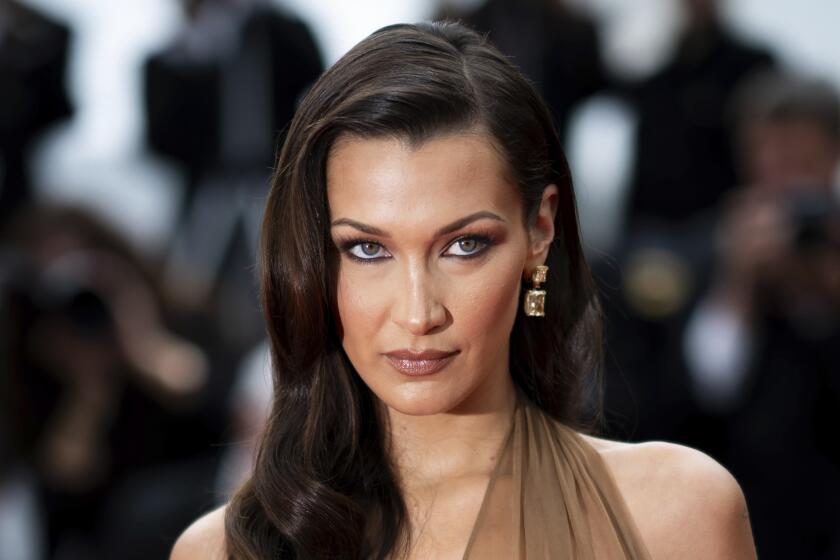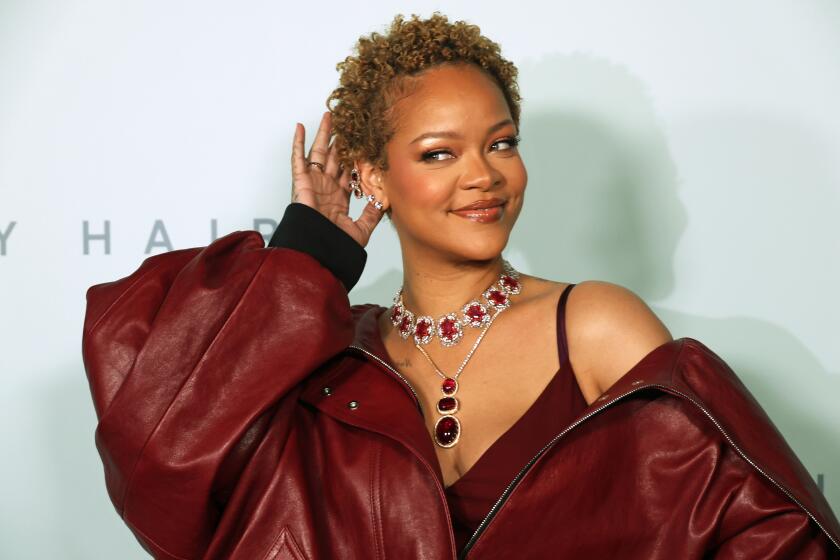Fashion’s defiant turn
It’s a sweltering afternoon, but crowds at the Yankin shopping center hardly notice, transfixed by the models parading along a makeshift runway in white boots, hot pants and short skirts.
Myanmar’s repressive regime may have a tight grip on power, but it’s losing the fashion war. “Hemlines are changing a lot faster than the political system,” said one Yangon fashionista, adding, “That was definitely off the record.”
For decades, Myanmar, also known as Burma, has tried to keep its people isolated from the outside world and its dangerous ideas about freedom.
“Decadent alien culture such as scanty dresses is unacceptable,” the New Light of Myanmar newspaper, a regime mouthpiece, lectured recently. “Appropriate measures need to be taken by one and all to protect our own culture.”
In fashion, that culture has meant the longyi.
Still mandatory in schools and most government offices, the graceful, modest mode of apparel is a wraparound cotton or silk fabric hanging from the waist to the feet. Nobel laureate and pro-democracy icon Aung San Suu Kyi, recently freed after spending 16 of her last 22 years in detention, wears it.
But other activists are a bit less traditional. In a 2008 “Panties for Peace” campaign, human rights groups worldwide urged women to send their used underwear to Myanmar’s superstitious military leaders. The Burmese believe that such contact robs men of their power.
“It was a nonviolent way to demonstrate opposition to the military leaders,” said Canadian activist Mika Levesque.
In Myanmar, a country that last entered the Miss Universe pageant in 1961, desire for power is at the heart of the ruling generals’ decades-long fight against revealing female clothing, said Monique Skidmore, an anthropology professor at Australia’s University of Canberra.
“Its focus on ‘traditional values’ reflects a quest for legitimacy and an ongoing attempt to persuade the Burmese population they are guardians of the past and therefore fit rulers of their future,” she said.
The Soviet Union clamped down on “Western imperialist decadent thought,” arguably with good reason, before it crumbled along with the Berlin Wall, a policy mirrored by China, under Mao Tse-tung, and North Korea, which claimed in a 2005 TV program that long hair in men can reduce intelligence by depriving the body of nutrients.
Some say Myanmar’s ruling generals started losing the fashion battle in 2005. As the capital shifted to isolated Naypyidaw, the generals left their families in Yangon. With daddy away, daughters soon shortened their skirts, or so the theory goes.
Others cite pro-business policies after 2000 that saw the Internet, satellite TV and South Korean dramas spread like wildfire. “For old ladies, especially, the changes have been rather shocking,” said Terry Tan, a Yangon-based jewelry designer.
Burmese advertising and media executives say they’re constantly skirting the regime’s red line. Readers love photos of pop singers with cleavage and short skirts, but these risk the censors’ wrath. Some acknowledge using Photoshop to “lengthen” celebrity clothing.
“When you take risks, readers love it,” said one editor, who, like others for this report, spoke on condition of anonymity. “But you have to balance this against some general who sees the magazine and complains.”
Getting it wrong risks punishment. Popular Journal magazine was shuttered for a week last summer after running several covers adorned with racy models.
Singaporean Brian Jeremiah said that when he moved here in 1995 to set up a modeling agency, most people didn’t even know what “model” meant. “All they knew were car models,” he said.
There were no shopping malls, fashion magazines, strapless tops or media coverage of fashion shows, he recalled, with photos showing armpits particularly taboo.
Today, Yangon has more than 20 malls, a host of nightclubs, thousands of wannabe models and few underarm qualms. Hemlines that once crept above the knee have retreated farther, into micro-minis.
Su Thin Zar Aung, 17, recently picked through racks of skimpy clothing at the Dagon shopping center. “I have disagreements with my mother and father if it’s too short,” she said. “Mostly I win, especially when I’m going out to a party.”
Not unexpectedly, the rapid change has created generation gaps. “From a Buddhist standpoint, these fashions are really not good,” said U Hla Myint, 65, a government employee. “But you have to be flexible since we’re practicing the market economy.”
Beliefs have also changed with style. “Traditionally there was a big value on virginity,” said one magazine editor. “But increasingly not. Parents can’t control their kids so strictly anymore.”
Although teenagers have been at the vanguard, a thirtysomething nouveau riche set is following close behind, flaunting its wealth with sexy, ostentatious creations, over-the-top colors and lots of bling.
“Sometimes I have to warn clients, ‘If you put on that much jewelry, you won’t be able to walk,’ ” said Ma Myinzu, a wedding dress designer.
Decades of isolation have left their mark. Myanmar largely skipped black-and-white TV and went straight to color satellite. It all but missed Madonna for Beyonce and Lady Gaga.
Images of beauty still revolve around 1950s Marilyn Monroe-style body shapes and styles, fashion mavens say. “J-Lo was very popular because she’s got a posterior like Marilyn’s,” Jeremiah said. “Myanmar’s just happy to be on its own, not letting anyone tell them what and why to do it” -- a welcome change, he added, from the predictable Milan-New York-Paris fashion echo chamber.
The regime’s grip, at least over fashion, may be illusory.
“The government pretends it controls things, but Western styles are really increasing,” said Hen Tha Myint, a member of Suu Kyi’s banned National League for Democracy party. “If the junta hates Western values so much, why don’t their soldiers wear slippers and longyis? It’s hypocritical. They know you can’t fight in a longyi.”
More to Read
Sign up for Essential California
The most important California stories and recommendations in your inbox every morning.
You may occasionally receive promotional content from the Los Angeles Times.






